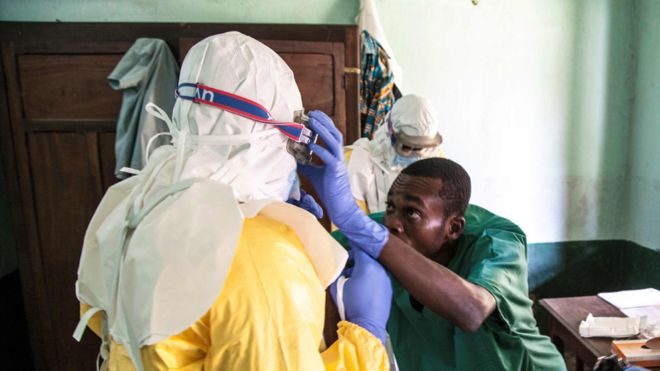DR Congo, after the incubation/infection time period has expired, has declared itself now clear of the most recent Ebola strain "Zaire" outbreak.
ref: https://www.reuters.com/article/us-h...-idUSKBN19M384Democratic Republic of Congo declared its two-month Ebola outbreak officially over on Saturday after 42 days without recording a new case of the disease.
The outbreak in Congo's remote northeastern forests, a record eighth for the country where the disease was first discovered in 1976, killed four out of the eight people infected, Health Minister Oly Ilunga said in a statement.
"I declare on this day, at midnight, the end of the outbreak of the hemorrhagic fever of the Ebola virus in DRC," Ilunga said.
Congolese health authorities approved the use of a new experimental vaccine but ultimately declined to deploy it due to the small scale of the outbreak and logistical challenges.
- Home
- Forum
- Chat
- Donate
- What's New?
-
Site Links

-
Avalon Library

-
External Sites

- Solari Report | Catherine Austin Fitts
- The Wall Will Fall | Vanessa Beeley
- Unsafe Space | Keri Smith
- Giza Death Star | Joseph P. Farrell
- The Last American Vagabond
- Caitlin Johnstone
- John Pilger
- Voltaire Network
- Suspicious Observers
- Peak Prosperity | Chris Martenson
- Dark Journalist
- The Black Vault
- Global Research | Michael Chossudovsky
- Corbett Report
- Infowars
- Natural News
- Ice Age Farmer
- Dr. Joseph Mercola
- Childrens Health Defense
- Geoengineering Watch | Dane Wigington
- Truthstream Media
- Unlimited Hangout | Whitney Webb
- Wikileaks index
- Vaccine Impact
- Eva Bartlett (In Gaza blog)
- Scott Ritter
- Redacted (Natalie & Clayton Morris)
- Judging Freedom (Andrew Napolitano)
- Alexander Mercouris
- The Duran
- Simplicius The Thinker




 Reply With Quote
Reply With Quote














Bookmarks